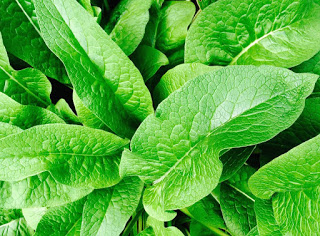Herbs are extremely useful for improving the health of your soil as well as your own health, and the flavour of your meal.
In my post yesterday, I mentioned I have dived into my parent’s library and found a wonderful collection of herb books. In my reading today, I focussed on important herbs for the soil.
Here are some very useful plants for the soil – the information is drawn mostly from The Book of Herbs by Dorothy Hall. She suggests growing comfrey, yarrow, chamomile, tansy, nettle and dandelion for the soil. She uses it mostly in her compost and liquid fertilisers, but also uses it as chop and drop – top-feeding the soil.
COMFREY
Comfrey is an excellent compost enricher with a chemical composition almost the same as animal manure. It is high in natural calcium and nitrogen, and its quick decomposition makes it a useful addition to the compost bin.
Comfrey is a vigorous grower and it’s roots forage deep in the subsoil for stores of minerals and nutrients. It is a great plant to chop and drop around fruit trees and in the vegetable garden. Adding the leaves around plants adds nitrogen and calcium to the topsoil as they decomposes.
 |
| I plant comfrey around my compost bays so I can easily reach some to add each time I work on it. |
YARROW
Yarrow is a compost catalyst. It is suggested in this book that it is useful in a ‘homeopathic dose’. Only a couple of leaves snipped finely and mixed thoroughly through a cubic metre of compost will activate it.
 |
| Yarrow – the compost catalyst – just a little bit is all you need. |
CHAMOMILE
Chamomile is very rich in natural calcium. It stops acidification and keeps the decomposing material sweet. The creeping perennial chamomile was one of the nine sacred Saxon herbs used:
- to help digestion
- as a soothing, warming healing agent
- to encourage good sleep
- as a plant tonic. Keep plants and the soil healthy and disease-free by planting chamomile around the garden.
- to make chamomile tea – to prevent ‘damping off’ of seedlings, to pour over the compost to add calcium, and pour in your bath to reduce inflammation of the skin and sooth sunburn.
TANSY
Tansy is valuable in the compost heap. It is one of the most mineral-rich of all herbs and adds good levels of potassium to compost. Whenever you trim back a plant, add the leaves into the compost. It is very easy to grow and will thrive in difficult corners. A few other uses include:
- scatter dried leaves in the pantry to keep ants away.
- rub the into the hair of a dog repels fleas.
- make a bright yellow dye from the little button flowers – used in he past to colour cakes.
- dry flowers dry well as a lovely addition to a dried flower arrangement
- (from the Middle Ages) put a tansy leaf in your shoe to stop leg cramps
NETTLE
Nettles are a common ‘weed’ in many parts. They are high in iron and catalyse composts too.
 |
| Prickly nettle is a very useful plant for the soil, an excellent liquid fertiliser – and a great food too. |
DANDELION
Dandelion, another common ‘weed’ is a potent source of minerals. Add the leaves and flowers it to the compost or chop and drop it around the garden. It grows readily everywhere.
 |
| Dandelion is such a useful plant, and you can find it growing almost everywhere. I easily found it here in the sandy coast soil around the Gippsland Lakes. |
I am happy to already be growing abundant comfrey, yarrow and tansy in my garden. Fortunately dandelions grow wild, but nettle hasn’t shown up at my place yet. I know friends with some, so perhaps I should try to transplant some.
What other herbs do you use to improve your soil?



Thanks for the info re the herbs. Comfrey grows well in our veg garden/chook pen plus nettle is around the traps…in small clumps. We don't get dandelion. Would love some to grow here.
I saw a big dense clump of dandelion on the side of the road yesterday – it's amazing where it comes up.
I live in the Coast where we have sand not soil. I've worked at developing soil for the past couple of years using home made compost and deep rooted plants like comfrey. I have planted a comfrey plant where ever I plant I fruit tree. All my young fruit trees are doing very well. I have one tree that I don't have a comfrey plant nearby and it is the one tree that is fighting I survive. When I start my seedlings off this week I will be planting some comfrey. Love this plant. PS it's great for putting against the skin when you sprain or roll an ankle. Helps take the swelling down big time!
Jane, that's great to hear how comfrey has helped your fruit trees in sandy environments.
When I am putting it on bruises, sprains and bites, I usually make a paste (chewing it up helps to release its potency) and wrap with a bandage, but if you're out and about without bandages, simply putting bruised leaves on also help too – hold them in with your socks. By rubbing the leaves together, this also helps to reduce the 'prickliness'.